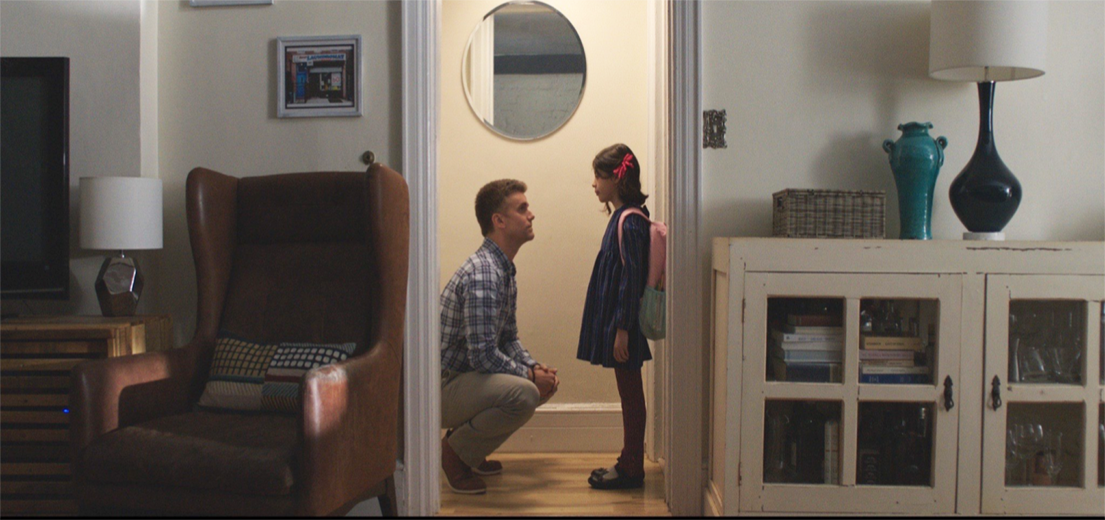Premiering at this year’s New York Latino Film Festival, Seneca tells a story all-too-familiar to starving artists. Written by Jason Chaet and Armando Riesco, the film tells the story of David Seneca (played by Riesco himself), a struggling Puerto Rican actor in New York City in pursuit of his unforeseeable big break. Along the way, the film’s protagonist also faces complications at home, watching his mentor losing a fight with cancer, having his beloved homeland devastated by Hurricane Maria, and to add to the turmoil, Seneca also finds himself on the losing end of a WorldStar-like street fight that goes viral. Faced with all of these challenges, Seneca must find a way to mend his shattered reality.
‘LLERO caught up with Riesco to talk about the influences and inspirational behind-the-scenes stories of Seneca, the attention the film has garnered since premiering at NYLFF, and some of the amazing charitable projects that the film spawned in Puerto Rico.
‘LLERO: Tell us about Seneca, and what inspired the storyline.
Armando Riesco: When I became an actor, I came to believe that being an actor would give me the opportunity to express myself in a myriad of ways. That’s always been true to a certain extent, but as an actor you always end up expressing someone else’s point of view. You’re constantly doing someone else’s take on the world, so you’re not the painter, you’re the paint. I started writing because I felt something inside of me, and I wanted to put it out into the world. I always wanted to be a storyteller, so [Seneca] was definitely an opportunity for me to do that, and tell my story or the story that I wanted to tell.
‘LL: So, is it safe to say that the film is partly inspired by your personal journey as an actor?
AR: In part, yeah. The film was inspired by lots of things. The character isn’t necessarily me, but it certainly has the things that itch inside of me. The things that bother me. The things that make me laugh. There are certain experiences that the character goes through that are totally based on my life, but they’re also based on my colleague who wrote the film with me. His name is Jason Chaet. He’s like my Jewish brother. We have this company called Kosher Quenepa that produced the movie. So, it’s him, too. For example, in the movie, the guy is dealing with the grief of losing his dad, and that wasn’t me. That was Jason’s experience. So, it’s a mix of me and him and the things that we’ve lived through.
‘LL: The film was partly shot in Puerto Rico shortly after Hurricane Maria. What sort of challenges did shooting during that time bring about?
AR: We shot October of 2017, and that was the first thing that we shot. I wrote the movie before the hurricane. We had just finished the draft, and it was about how Puerto Rico was a mess because of the debt crisis, because of Zica, because of Chikungunya. Once the hurricane happened, I decided that I would either have to abandon the movie or include the hurricane. I decided to include the hurricane, and it fit right into what we had already written.
‘LL: How did you get a film crew together with everything going on in the aftermath of the hurricane?
AR: I went on Facebook, and contacted my friend David Norris, who’s a filmmaker in Puerto Rico. I was reaching him on Facebook Messenger trying to video-call him, but he didn’t have a signal. He’d be like, “Wait, wait, wait. Let me go to the palm tree. I heard there’s a better signal there.” [Laughs.] It was this crazy thing where in fits and starts we got to talking two minutes at a time, and he was like, “Yes! I have a generator, and I have a camera. Come down!” So, I packed my bags. I got a bunch of people to send a bunch of supplies. I came down to Puerto Rico, and we shot the thing. We shot it in about two days. We used the generator to power up the batteries. It was a skeleton crew, but it was really the best. They were awesome, and they were super happy to be working, because they had been sitting on their asses for about a month. It was a magical experience, honestly. It was really amazing.
‘LL: The film made its premiere during this year’s NY Latino Film Festival. How did you get involved with the festival?
AR: I wanted the film to premiere in New York. There were a few people behind the scenes that were guiding me, and I’m sure every indie filmmaker hears this, “You gotta go for the big guns. You gotta go for Sundance or Cannes.” But, I think there’s been a turn in the last few years—and I think it’s the right turn to make—where people have decided that instead of playing that game, I’ll just let them come to me. It’s here if they want it. The New York Latino Film Festival has nothing to envy those other festivals. It’s Times Square, 42nd Street—there’s nothing lesser than about the festival. So, I thought, You know what? I want to put this movie here. I’m glad that it worked out, and that we had the world premiere there. I think that it’s important that we always tell our own story, and not always cater to the mainstream.
‘LL: The film received the Honorable Mention award at the festival. How did that make you feel?
AR: Man, that was great. I really wasn’t expecting it. The response at the screening was really incredible and amazing. It felt really good, man. Any kind of commendation—any kind of sweetener—that you can put on the bait [laughs] for hopefully some distributor to go, “Oh! Maybe we should buy this thing,” it never hurts.
‘LL: Where can our readers who weren’t able to catch the film during NYLFF go to see the film?
AR: That’s exactly a battle that we’re fighting right now. I think that’s the battle that every indie filmmaker has. It’s like it’s almost easier to make the movie than to sell it. A few people who are in the position to promote the movie and get it seen by a larger audience have seen the movie, so we’ll see if anyone pulls the trigger.
‘LL: What is something you hope the audience walks away with after watching the film?
AR: I want them to put themselves in the character’s shoes, and understand the plight of Puerto Ricans with more clarity. After the hurricane, I was walking around New York in a very similar way after 9/11, which I was also in New York for—except that Hurricane Maria had only impacted to 1 in 20 people. For Hurricane Maria, we were walking around in a dazed stupor, but life just kind of kept going for everybody else. That’s actually part of the movie as well. So far the audience reaction has been really great.
More on how Armando used the film to give back to the community in Puerto Rico and his advice for filmmakers after the jump
‘LL: You held a contest for the artwork to the film’s poster. Can you tell us a bit more about that?
AR: I’ve been trying to do as much as I can. When I came to Puerto Rico to shoot both times, I felt it was my moral responsibility to give these people a hand. When the time came to do the poster, my friend, Laura Rentas had this idea, and she was like, “Why don’t we continue this thing about giving Puerto Ricans a hand, and make a contest, particularly for students, where they draw something up, and we pick the poster from their submissions?” We did that, and there was a prize—I think it was a $500 prize—and we ended up picking two posters. They were done by two amazing, female, Puerto Rican artists—Nivea Ortiz (instagram.com/nivea_ortiz) and Marili Pizarro (instagram.com/mim_pizarro). The submissions were crazy, man!
‘LL: What was some other charitable work you and the film crew did while out in Puerto Rico?
AR: There’s a character in the movie that’s played by Tony Plana, and the character is based on the guy who in Puerto Rico made me feel that acting was a possibility for a career. [Fr. Francis Golden] sort of pushed me off into that direction. At the same time that I wrote the movie, and the hurricane hit, I decided if I’m going to create a character for him, I also want to do something in his name that goes beyond just telling a story—something that concretely does something good for the community. And so, I started a scholarship in his name. So far, we’ve raised $58,000, and we still have an amount to go because we’re putting a kid from the seventh grade all the way through to the twelfth grade at a school in Puerto Rico, El Colegio San Ignacio, which is one of the best schools in Puerto Rico.
‘LL: What’s some advice that you can offer aspiring filmmakers?
AR: Save your money [laughs]. You have to find a way to weather the ups and downs. In any type of artistic career, those ups and downs are inevitable. It doesn’t matter who you are. It doesn’t matter if you start hot. If you’re there for awhile, it’s going to go up and down. You have to be kind of like Seneca—the Roman philosopher Seneca, not the character in my movie. That’s actually what the initial story is based on, that Roman Stoic, Seneca. His whole M.O. was that you shouldn’t get attached to things. When you get rid of things, you can actually find a deeper meaning, and actually find yourself scratching at what is actually itching you deep inside. I think that’s important for artists in general.
Photo by Nivea Ortiz & Marili Pizarro

